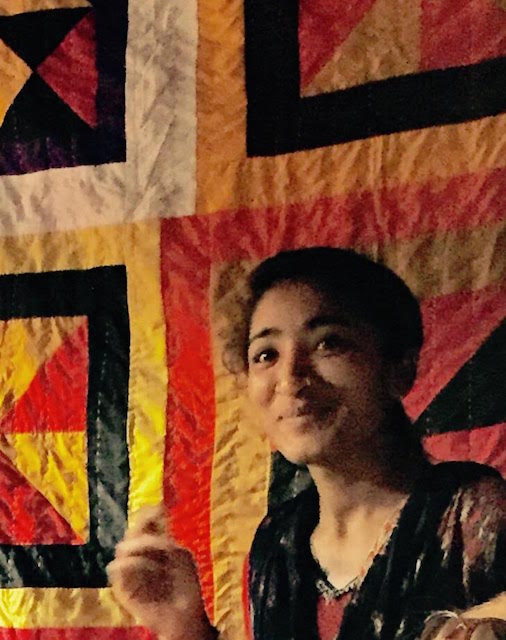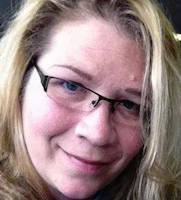
“It’s only hard.” That’s what I tell myself when I am fighting the urge to eat a nice fluffy piece of cheesecake dripping with cherry syrup.
“It’s only hard.” That’s the phrase I use when I force myself to take the initiative to engage with someone who has snubbed me on more than one occasion.
“It’s only hard.” Those are the words ringing in my head when I struggle to put ink to the page so I can finish my novel and fulfill my dream of being a writer.
That’s the “hard” in the forefront of my mind these days: sharing my soul with the world in the form of written words on the page. Facing my fears of being rejected because I’m not good enough is not easy, but I am working on it—little by little.
I have been building a life that supports my dream. I am creating a network of friends who inspire and encourage me. I met several like-minded souls last fall when I booked a 30-day writers retreat in Bali. Making progress on my novel was easy when I was half way around the world, far away from the day-to-day distractions of worries and obligations. I embraced those glorious days on a mystical, tropical island where I woke to the gentle sounds of a groundskeeper sweeping up the fallen flowers on my patio each morning at daybreak. But that was five months ago, and my writing has fallen off as the reality of paying my mortgage and electric bill intrudes on my creative process.
So when another opportunity to escape my day-to-day reality came up on my Facebook newsfeed, I pounced. What could be more exciting and invigorating than a Himalayan Writers’ Workshop? “Intriguing,” I thought, “Another exotic land. Glorious snowcapped mountain-scapes. Maybe I would even meet someone who was going to make an ascent on Mount Everest on the plane.”
I came to Nepal seeking the type of inspiration mountain climbers evoke, real life stories fueled with perseverance and determination to make it to the top of the world’s tallest mountain. I found it, but as I learned with everything in Nepal, what you seek never appears in the form you expected. Hidden treasures are found behind the masks of Hindu gods.
Upon my arrival to the bustling capital city of Kathmandu, I discovered electricity only runs half the time in my luxurious Western hotel. I learned to inquire about the schedule for distributing power so I would know when to charge my portable electronics and when I could take a shower with the lights on. My priority in the morning was securing four 1.5 liter bottles of water in order to stay hydrated. It’s best to avoid getting thirsty and resorting to drinking something my digestive tract would regret. These tasks became my primary challenges each day. My perspective of “hard” shifted with my environment.
The next day, my “hard” was climbing 365 steep steps to visit the ancient Hindu temple, Swayambhunath. It seemed like it took me a year to get to the top. “Hard” became dodging motor scooters and cars in the chaotic streets without the safety of crosswalks and stoplights. I adjusted to the laws of gross tonnage where the vehicle with the greatest velocity and weight has the right of way. Pedestrians beware. That was okay. I managed as my “hard” transformed.
“Hard” then became not looking in the eyes of an old woman trying to peddle her goods to a wealthy American. “Hard” became figuring out how to bargain down inflated prices for foreigners when my guilt tells me to just pay it anyway.
My “hard” shifted with the phases of the moon.
Somewhere around day four or five, my “hard” was the internal struggle of whether or not it was appropriate to take a picture of a woman mashing her feet in mortar under the midday sun. She was rebuilding a collapsed brick wall from the massive earthquake that struck this tiny nation one year ago. She smiled and offered me a greeting of “Namaste” as I passed by. I said “Namaste” in return. Yes, the divine in me recognized the divine in her. I was a witness to her powerful and enduring spirit as she smiled while stomping mud to make her home. A block down the street, I came across a stone carving of Ganesha—a Hindu god representing the remover of obstacles, easily recognizable by of his elephant head—I offered a small prayer upward with that lady and the entire nation in mind as they move forward in reconstructing their lives.
The following day, “hard” became being brave enough to accept an invitation to visit a beggars’ camp of migrant Indians—those in the lowest caste, the “untouchable” caste. “Hard” was watching our guide shake their hands and wondering if they would be insulted if I refrained. “Hard” was imagining a family of seven sleeping in a small 10’x12’ space with nothing but a cement floor, brick walls, and a corrugated tin roof for which they pay pennies to rent. No electricity—ever.
Our guide, James, befriended these people a few years ago. He braved the “hard” a decade ago, forgoing his life on Wall Street for life in a monastery in the Tibetan Buddhist enclave of Boudhanath. When he asked his lama who he should help, his lama replied, “Help the person you see.” Upon exiting the monastery and entering the busy round path of the quora encircling the stupa (a massive three dimensional mandala built over a sacred Buddhist site), a woman holding a small child with big brown eyes approached him begging him for rupees. He told her he wouldn’t give her money but offered help in another way. She invited him to her home for tea and he obliged. He followed her outside the sacred grounds, down the street, through small alleyways, and into an open dusty field where he found a community of landless migrants who lived in tents surrounded by outer ring of trash. In that moment of practicing intentional compassion, he decided to help those who no one else was helping.
His relationship with this community developed over the course of time. At first, he fulfilled simple requests of their needs without giving them money, sometimes in the form of medicine and sometimes in the form of food, until one day he noticed them making quilts out of fabric scraps. They brainstormed the idea that if the mothers could make the quilts, they could sell them to fund the children’s education. The price of the one quilt is set to the cost of sending one child to school for an entire year, currently $190, which covers tuition, books, uniforms, and shoes. James sold the first quilt to his own mother.
And as I sat there in this small box of a home, the old adage came to my mind: “Give a man a fish, and you have fed him once. Teach him how to fish and you have fed him for a lifetime.” I found it “easy” to empathize with their plight. It was “easy” to look into their eyes and listen to their stories. It was “easy” to see the light of hope and it was “easy” to find optimism beyond the piles of trash I walked by to get there.
Today, 53 children from this community are attending school.
Ravina, one of the oldest students, is a bright and shiny star. She is a delicate, tiny girl with a subtle smile and sublime spirit. She sat with us in her finest sari and patiently translated the conversation. She told us she finished her 10th grade exams the previous day and they were “easy.” She is the youngest of seven sisters. She is the first in her family to be educated and the first daughter not be married off at the age 15. Passing the exams qualifies her to proceed ahead to the next two years of school to obtain the equivalent of a high school diploma. She aspires to study business in an American university for which she already has a sponsor, as long as she continues to excel in her studies. She speaks eight languages. She serves as a cultural liaison between James and this community. She is interning to take over the administrative duties of the Quilts For Kids program. She maintains the quilt inventory. She selects which children receive the opportunity to go to school, as she knows which children are eager to study and which families are committed to staying.
I asked, “What are your dreams?” She responded, “I want to help my family.”
Her humility makes it “easy” for me to want to help her.
I was impressed with the design work of the hand-stitched quilts, as they remind me of ones I might find back home at a country fair. They told me that an outsider woman came to teach them more advanced quilt-making skills. These mothers had never used rulers before. The lady taught them to measure design elements by the size of the hands. I am impressed by the intricate geometric design on one of the bright gold fabrics used as a border. The fancy fabric was a remnant of frabric purchased from a tailor who makes monks’ robes. I witnessed a sense of pride in the eyes of Ravina’s mother as we handled the quilts.
One of my fellow workshop mates asked Ravina’s mother about her life. Her eyes lowered to the ground and her smile vanished. She said something in her native tongue and Ravina translated it as, “It’s a hard life.”
I felt tears well up inside me as my smile melted. I looked down at the ground too. The reality of “hard” sunk into my soul. I wondered how many strangers she watched walk by as she begged for a few grains of rice to feed her children. I wondered how many times she has heard the word “no” and how many times she has been spit upon. I imagined the enormity of rejection that she faced in her lifetime.
I left that camp carrying a quilt in my arms. That was “easy.”
I plan to display it some place prominent in my home to remind me about the reality of what is “hard.”
And suddenly, with each rising of the morning sun, making the choice to order an egg-white omelet with fresh vegetables washed with microbe-free water instead of waffles with whipped cream doesn’t seem so “hard.”
And suddenly, the thought of approaching people to ask an innocuous question seems simple.
And suddenly, publishing my words for the world to see, well, that’s not “hard” at all. In fact, it’s pretty darn easy, as if all my obstacles have magically disappeared.
Author: Becky Owens
Editor: Emily Bartran
Photo: Author’s Own
~






Read 9 comments and reply